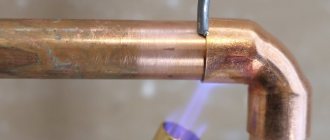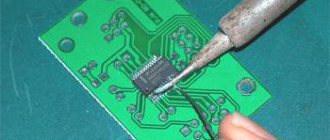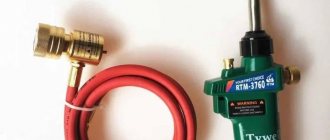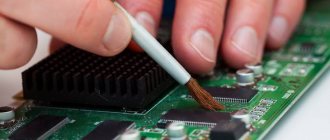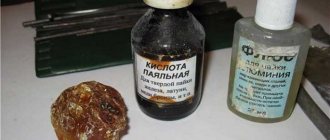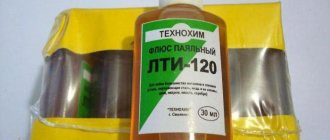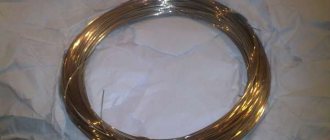Before buying a new electronic device, most still try to repair the old one with their own hands. There are many ways to fix a breakdown, and everything will depend on the type of device that requires repair. However, soldering has been and remains a very common method of troubleshooting. Mastering it is not as difficult as it might seem, you just need to take into account a few rules. For example, that one soldering iron will not be enough and most often you cannot do without flux. This material provides more details about what soldering flux is.
What is soldering flux
In short, soldering flux is a tool that helps make high-quality soldering. It can be of either organic or inorganic origin, but in most cases it is always a mixture of several materials.
Before using this composition, you need to clean the soldering area, but sometimes fluxes themselves can clean the material. No other preparatory work is usually required before using it, except for those aimed at protecting against fumes, which soldering agents almost always produce.
In short, no quality solder joint is possible without flux.
What is it for?
The purpose of fluxes is easy to understand. To solder the contacts to each other, the metal needs to heat up to at least 500 degrees. But at this moment, an oxide film forms on the metals, which prevents the solder from connecting the metal parts. It is for these cases that flux is needed.
Typically, the flux is stable at room temperature and begins to act only when heated, reducing the effect of high temperatures on metals. So, fluxes help:
- Remove the oxide film that appears when rolling the metal.
- Prevent further oxidation.
- Wet the surface while soldering.
First of all, all fluxes must withstand heat and retain their properties. But these are not all the signs that you need to pay attention to when looking for a substance for soldering, which is even more difficult than using it.
With rosin
When planning the installation of electrical circuits or radio components using easily melting solders as flux, it makes sense to choose pure rosin or mixtures based on it.
The advantage of natural resin lies in its inertness. It perfectly protects the joint from oxidation and does not cause corrosion, reduction, or dissolution of metal parts.
After using regular light rosin, it is enough to clean the work area with a brush or cotton swab slightly moistened with alcohol. You can use acetone as a solvent.
For soldering in hard-to-reach places, it is advisable to choose a solution of rosin in alcohol. If you don’t have rosin, you can take pine resin. The result will not disappoint. Alcohol is sometimes replaced with cologne, gasoline, acetone, and ethyl acetate.
If the soldering area will be subject to high thermal loads in the future, it makes sense to add glycerin to the mixture of rosin and alcohol.
Ethyl alcohol of any degree of purification is suitable for preparing solutions. You need to take regular rosin, and not specially prepared for rubbing bows. “Musical” types may have impurities that interfere with soldering.
Classification of fluxes
How soldering agent works is easy to understand. But you still need to choose it correctly, and for this you need to study and take into account the types of fluxes. And this is the main difficulty, since you need to take into account a lot of parameters when choosing.
More information about what categories soldering products are divided into and how they differ from each other is described below.
There are a huge variety of fluxes depending on their purpose; it is necessary to choose the right composition
By type of impact on contacts
Among the types of fluxes for soldering are:
- Acid-free or “neutral” fluxes. They will not destroy the solder and generally do not show any chemical reactions in the areas where the solder is made. Usually used for soldering small parts. The product itself includes ethyl alcohol, glycerin, and turpentine. The melting point reaches 150 degrees.
- Anti-corrosion ones have phosphoric acid as the main ingredient, which is often used for the production of anti-corrosion impregnations. Therefore, when heated, these compounds not only cleanse the weld site from any corrosion that has arisen, but also prevent its reappearance.
- The active compounds contain hydrochloric acid and are therefore used only for iron. They are not suitable for radio equipment, as they damage the board. This flux removes oxides and reacts with the metal itself, making the compounds very strong. Cleaning before work is mandatory, as is strict adherence to safety rules - such soldering substances are poisonous when evaporated. Be careful as this flux will be a good conductor due to its composition. So, if they are not used carefully, you can get a short circuit. Sometimes active soldering agents are made from zinc chloride.
- Activated - made from salicylic acid or aniline hydrochloric acid, no cleaning is required before using them, since they themselves clean the adhesion site. Rinsing is not required, but is usually recommended. Typically, this composition is used for a connection that will be constantly mechanically damaged.
- Protective fluxes for soldering do not cause any chemical reaction, do not emit harmful substances during soldering, and protect materials from corrosion. They are made from Vaseline, wax or olive oil. Such soldering agents begin to melt at 70 degrees; stripping is not required when using them.
Popular varieties
Compositions of different consistencies are widely used. The most famous fluxes that can be chosen for soldering certain parts include:
- rosin and its alcohol solutions;
- glycerin solutions;
- borax;
- soldering grease;
- phosphoric acid;
- soldering acid (a solution of zinc chloride in hydrochloric acid);
- some brands of gel fluxes (Flux-Plus, RMA-223).
There are compositions in the form of tubes or paste briquettes containing both flux and solder. In many cases, this is a very convenient option that simplifies soldering.
When thinking about which flux can be used for soldering with a hairdryer, do not hesitate to choose paste. It is suitable mainly for surface mounting, working in hard-to-reach places, with SMD parts.
The best soldering flux performs all the necessary functions at once. There are different classifications of soldering aids.
Fluxes can be very active, good at removing oxides and other impurities on the surface. The opposite, unpleasant side of their action is the possibility of oxidation of the metal of the part. Soldering must be carried out carefully, followed by washing the work area.
There are compositions with moderate action that provide sufficient surface cleaning and good solder distribution.
Which flux is better to choose?
To choose a flux for soldering, you also need it to be suitable for the material to be soldered:
- For copper, for example, rosin is often used. It is suitable for any simple electronics with a large number of wires.
- Liquid solders with Vaseline or salicylic acid are useful for radiators and wires with one core.
- Liquid rosin is suitable for multi-core wires.
- The paste-like composition is suitable for radio components and various connectors, for SIM cards and flash drives, for example.
- Wires and connectors require active fluxes for soldering.
- For small radio components on boards, neutral fluxes in paste are suitable. When working with boards, you need to choose products that will not stain the board itself, since it is almost impossible to remove the product from the surface around the soldering area.
- Typically, activated compounds that do not require rinsing are chosen as flux for soldering microcircuits. They should be liquid or gel-like.
Also, when choosing fluxes, you should read other people’s reviews in order to make a choice from trusted brands, since many companies produce soldering products, but not all of them are of high quality.
What to wash off with
To wash off the flux after soldering the microcircuit, it is recommended to use any solvent suitable for this purpose, with which you can remove stains and traces of a neutral composition.
Most often, the following popular types of solvents are used to remove flux residues after soldering:
- pure technical or medical alcohol;
- regular acetone (or its mixture with other chemicals);
- alcohol-containing perfume compositions (although it is not advisable to use them).
There are special “washes” on sale for removing flux from boards, in the manufacture of which (with a few exceptions) the same components are used.
It is recommended to clean the boards with all the compounds listed above in the following sequence.
First, a piece of clean soft flannel is taken, which is then moistened in a small amount of liquid solvent (from the mixtures discussed earlier).
At the final stage of cleaning, the area of the microcircuit with the used flux is thoroughly wiped with a previously moistened cloth, which will thoroughly remove all traces and stains remaining on it. After the treated areas are completely dry, you can begin to coat them with protective varnish.
How to use soldering flux
To correctly apply soldering flux, you need to look at its consistency:
- If hard solder is used, for example, from tin, then the soldering iron itself needs to be dipped in the reagent, and then take a little solder.
- Liquid flux assumes that it will be applied with a special brush. You need to be careful here, as brushes often quickly deteriorate due to high temperatures.
- The paste is applied with a stick, toothpick or syringe with the tip of the needle cut off.
And then act like this:
- Clean the surface from oxides. Sometimes this is not required if the flux allows it.
- A layer of flux is applied.
- The composition and parts are heated at the soldering station.
After soldering is completed, you need to wait until the seam hardens.
Soldering bga chips
How to solder boards? And how does BGA stand for? Bgacenter experts answer these two frequently asked questions during soldering courses. From English - ball grid arrey, that is, an array of balls that looks like a grid. Solder balls are applied to the microcircuit through a stencil, then a stream of hot air melts the solder itself and contacts of the correct shape are formed.
And the soldering process consists of a certain sequence of actions, following which we obtain a high-quality connection. But there are a large number of nuances for which people come to study.
Starting with at what angle and at what distance from the board to hold the hair dryer nozzle, temperature conditions for dismantling and installing microcircuits, from which side to start the paddle. And during diagnostics, and there is an interlayer short circuit, nothing heats up.
How to find the faulty element or circuit in this case? And many other subtleties that a current service center master can know. And the one who can confirm his level with completed repairs.
iPhone repair at Bgacenter
Where are active fluxes used?
Soldering microcircuits with active fluxes is not recommended, as this may render the microcircuit unusable. Fluxes with aggressive acids are mainly used for soldering wires and metal products that are severely damaged by corrosion. It goes without saying that before soldering parts it is necessary to get rid of traces of corrosion on the metal.
Prominent representatives of active fluxes are: SF-OR/LF-3.5 flux, SFL-RO/NC-800 flux, ZN 85% soldering acid, LTI 120 flux and others. When using active flux, after completing soldering it must be washed off with plain water.
Hot air soldering station
The purpose of the Quick 861DE ESD Lead station is soldering (disassembly and installation) of BGA microcircuits and SMD components. Advantages of this station:
- three memory modes CH1, CH2, CH3;
- high air-to-air performance, Quick 861DE is suitable for soldering circuit boards, phones and laptops;
- temperature stability.
What could be improved in the design of the station is temperature control not with buttons, but with rotary controls, as on the Quick 857D (W)+.
Quick 861DE ESD Lead
NC-559-ASM-UV eBay
This fighter has been disqualified early. Number four we have Chinese GUTALIN. Featured in the review from BASAdm
under the name
AMTECH RMA-223
The price at the time of purchase ranged from 99 cents to 3-4 dollars, due to the greed of the seller.
Stock photo, from ebay. Real photo under spoiler. Pay attention to the third photo
Additional photos
Pay attention to the tube cap and its end cap. In 99% of cases (except for the one listed here below), all fluxes that have such a black tube cap are low-quality shoe polish, more or less normal and simply good fluxes have lids ALWAYS on the thread, NC-559 and RMA-223 pretend for originality - orange caps, Kingbo RMA-218 has its own blue cap, also threaded.
I won’t describe the “quality”, but my opinion completely coincides with the previous one from BASAdm
: Vaseline, shoe polish, grease, and other similar substances will be just as effective as THIS. And even more effective. The fluxing properties are completely absent, the smell is most reminiscent of mineral oil, sticky, washes off badly, leaving greasy stains. It smokes, smokes, and so on.
Rubbish, not worth the money, in short.
Z.Y.
To be fair, I have to tell you something else. Once upon a time (five years ago) I bought a syringe exactly like the one in the stock photo. The contents were white, almost like milk, and it was a pretty good flux, no matter what. Those. it was a 146% NOT flux called NC-559, but it was fine. Actually, when I saw the picture on eBay, I fell for it. But it was not there! (ts) Apparently, since the Chinese have screwed themselves up by selling shit and shoe polish under the label “RMA-223” for many years in a row, they created a great anti-advertising for it, and they stopped buying it. And since the deposits had to be sold, they began to paste a new sticker “NC-559” right over the old one and sell it.
Soldering the chip
90% of the success of the repair depends on the correct dismantling of the microcircuits. It is at this stage that it is important not to tear off the nickels and not damage the microcircuit with high temperature. And they begin desoldering the chip by removing the compound.
Compound
Compound is a polymer resin, usually black or brown, used in the manufacture of telephone motherboards. Purpose of the compound:
- Additional fixation of radio components and bga chips on the board.
- Protection of non-insulated contacts from moisture.
- Increased board strength.
The most critical microcircuits, such as: CPU, BB_RF, EPROM, NAND Flash, Wi-Fi, are filled with compound at the factory after installation. And before dismantling, it is necessary to clear the perimeter of resin.
Removing the compound
Dismantling sequence
- Carefully inspect the board for previously performed repairs.
- Perform diagnostics and take the necessary measurements.
- Prepare the board for soldering, remove protective screens and stickers. Disconnect and remove the coaxial cable.
- Secure the motherboard in the appropriate holder.
- Remove the compound around the chip being removed. The temperature on the hairdryer is 210 – 240 degrees Celsius.
- Install heat sinks. The installation location of the heat sinks depends on the location of the soldered chip.
- Use a hairdryer to warm up the board for a few seconds. Thus, we increase the temperature of the board so that the flux spreads evenly.
- Apply FluxPlus, or any other no-clean flux, to the surface of the chip.
- Direct a stream of hot air onto the element to be soldered. Temperature during dismantling is 340 degrees Celsius. How can you tell when the solder has melted and it’s time to remove the chip from the board? There are several ways to do this:
- Track time using a stopwatch.
- Count down the seconds to yourself.
- “Push” with a probe or tweezers the microcircuit itself or the nearby harness (capacitors, resistors or coils). As soon as the chip being soldered begins to move, by a fraction of a millimeter, it is time to place the spatula under or use tweezers.
- Prepare the contact area. For this:
- Use a special spatula to remove any remaining compound;
- tin all contacts without exception with Rose alloy;
- use braid to collect solder residues from the working surface;
- After the motherboard has cooled to room temperature, wash the contact pad with alcohol, BR-2 or DEAGREASER.
- The board is prepared for installation of a working microcircuit.
Soldering chips
Soldering bga chips
The general principle of soldering is as follows: thanks to the surface tension created when the solder melts, the microcircuit is fixed relative to the contact pad on the system board. Soldering temperature for bga chips on iPhone boards is 320 – 350 degrees Celsius.
Preparing the chip:
- Use a special knife to clean the compound.
- Use a 1 or 2 mm copper braid (depending on the geometric dimensions of the chip) to remove any remaining solder.
- Restore the ball leads. There are two ways to draw conclusions:
- BGA paste is applied through a stencil to the surface of the microcircuit (priority method) Used in most cases.
- Manually, with BGA balls. This option is suitable for chips with a small number of pins, up to 50. Although a few years ago, when the quality of stencils left much to be desired), modems on the iPhone 5S were rolled manually. That is, each ball was installed separately using a probe or tweezers. And this is 383 contacts, as calculated by ZXW. If, when distributing balls on a chip glued to a stencil, the balls are not fixed in the holes of the stencil; this means that not enough flux has been applied to the microcircuit.
- If we are working with paste, be sure to warm up the microcircuit with a hairdryer after removing the stencil to form contacts of the correct shape. Additionally, fine-grained sandpaper, P500 GOST R 52381-2005, can be used for these purposes.
- Use alcohol and a toothbrush to finally clean the microcircuit.
- Solder the chip onto the contact pad, installing it along the key and gaps.
- When installing a new microcircuit (purchased from a supplier), a mandatory procedure is to roll the chip onto lead containing solder. This is necessary to lower the melting temperature of the solder and reduce the time the board is exposed to high temperatures.
Soldering bga/BGA soldering
Based on hydrochloric or phosphoric acid
To make soldering flux with your own hands with hydrochloric acid, you need to proceed as follows:
- Concentrated hydrochloric acid is diluted with water - 1:1.
- Pour the mixture into zinc granules (necessarily in glass).
- Wait for the zinc to dissolve. 1 liter of mixture will require 412 g of zinc, from this you can make your own calculations.
Important!
Since zinc will dissolve with a large release of hydrogen, the room should be very well ventilated, and there should be no fire nearby.
Steel is soldered with this flux, but if you add ammonia to the solution (in the same amount as zinc), then this soldering agent is suitable for many other alloys and metals.
This will be a liquid flux, so it is better to store it in glass and apply it to the soldering area with a brush. The container must be tightly closed so that the homemade product does not spoil.
Flux made from citric acid or aspirin
It’s easy to make a flux with your own hands from citric acid or aspirin, because they are quite good antioxidants. This is the simplest soldering composition that you can make yourself.
You just need to take an aspirin tablet or citric acid, dissolve it in water until it completely disappears (no sediment should remain either).
Important!
When soldering, a lot of gas will be released here, so the room should be very well ventilated.
It is recommended not to use lemon juice instead of acid, as it will have almost no effect.


